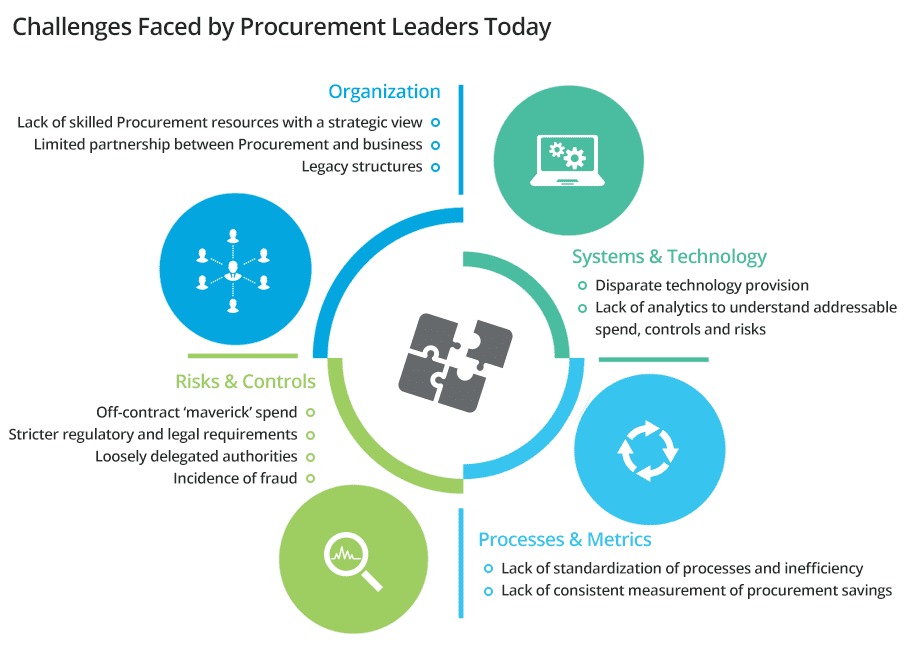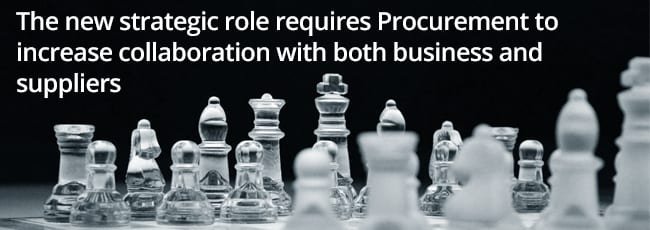According to the Chartered Institute of Procurement and Supply, 2017 saw technology continue to drive improvements in processes, data, insight, and savings. Efficiency gains remained the constant propeller across various procurement trends.
However, 2018 sees a new trend. A recent study shows 2018 to be the year for procurement to develop a new digital operating model. Organisations will now have to strategically understand roles and capabilities. The key question will be, ‘Are we shaped, sized and priced right to deliver?’
Sourcing has become strategic in 2 ways; operational and economic. Studies show that over the last 3 decades, manufacturers have increasingly spent over 70% on raw materials and purchased components and services. The increasing cost pressure translates directly into reducing the input cost of raw materials while increasing quality and performance.
While the vast majority of enterprises believe that digital technology will transform procurement, only a third have a digital strategy. Even fewer have the resources for a digital transformation. So where do you start? It’s a simple 4 word process to get started – Create a Sourcing Plan
Step 1: Begin with a SWOT analysis: To begin, you’ll need to benchmark current performance, resources used, costs for all the departments/functions in the organization, and current growth projections. This will help describe current conditions within the organization as well as with primary customers, supply chain, and the overall market.
Back in the day when U.S car manufacturers began losing to Japanese companies, they had to take a step back and revaluate their strategy. Their analysis showed that upstream component quality was critical to their end product. To confront the gap with cost and quality, they began to move design, engineering, and manufacturing work to specialized partners. They very quickly realised the success of the Japanese Keiretsu model of networked suppliers. They created strategic sourcing relationships for complex sub-assemblies such as seats, steering columns, and braking systems. Suppliers had to now meet very high expectations of cost and quality specifications. Both parties shared in the savings generated from improved efficiency, which provided ongoing incentives to identify and remove unnecessary costs.
Step 2: Know your supplier: Traditionally suppliers were chosen based on best price. Instead look at choosing a supplier like buying your first home, with Due Diligence. Supplier selection is a multi-criteria problem that involves both qualitative and quantitative factors. It should be an ongoing evaluative process to understand a supplier’s suitability towards an organization’s sourcing needs.
A supplier must be evaluated based on performance. Financial statements, credit reports, and references need to be verified. Do your supplier metrics provide an accurate picture of how well the supplier is meeting your needs? Are you monitoring the supplier for contract compliance and performance to agreed-on service levels? The idea is to create a collaborative environment for all stakeholders working together towards a mutually beneficial goal.
Let’s take the example of Chrysler. One of the reasons for Chrysler’s comeback was due to the creation of a ‘Value-added partnership’ with its suppliers, distributors and union. The car manufacturer revamped its entire procurement structure and created a collaborative environment with its suppliers. Chrysler wanted to abolish the ‘counting pennies’ system and create a sustainable value-add system.
Chrysler consolidated component purchases with a few suppliers who could sustain competitive costs, high quality, and efficient delivery. This partnership ensured that Chrysler and the suppliers had a common goal to achieve the lowest total systems cost.

Step 3: It’s also about the money: Organisations should “slice and dice” the spend data in real time, identify opportunities for vendor consolidation and other savings, and generate actionable reports on a continuous basis. Analysing Spend Data is a game changer for a successful Strategic Sourcing Strategy. Defining the ROI of any new strategy is imperative and visibility of Spend data makes this possible.
For example, despite having an in-house procurement department, a leading freight transportation company in North America lacked sufficient insight into its business spend and the ability to generate meaningful information on a variety of important metrics, including suppliers by spend, regional spend distribution, volume-based top suppliers or suppliers by order.
Based on the spend analysis, the client was able to identify and take corrective actions about the inefficiencies in its procurement system, enabling it to reduce maverick spends and disparity and better supervise supplier relationships, manage risk, recover overpayments and benchmark its relative position – for an estimated total annual savings of $1.4 million.
Step 4: Find the solution: Technology can give you the answer most of the time. You need a tool to help your organisation drive fast, sustainable results by automating and streamlining critical tasks involved in sourcing. A strategic sourcing solution will help seamlessly integrate sourcing process automation with supplier relationship management and planning functions augmented by advanced analytics functions.
When you have an underlying strategy behind your sourcing efforts, you have control over the right information and your organization can consolidate and leverage spend, collaborate with the best vendors, all in an effort to make the best decisions it can in the marketplace.
Reference for the Keiretsu model in Step 1
https://en.wikipedia.org/wiki/The_Machine_That_Changed_the_World_(book)



